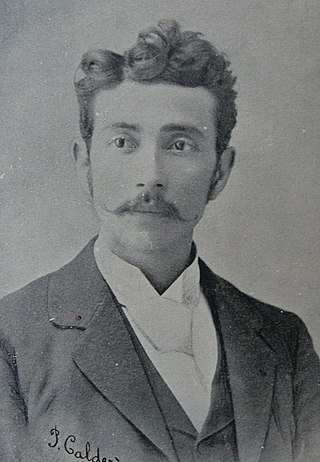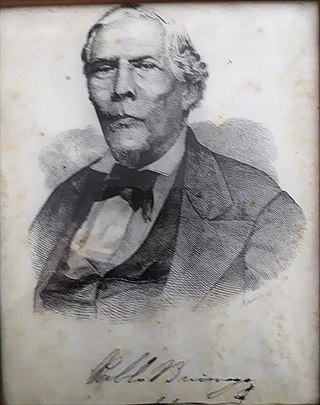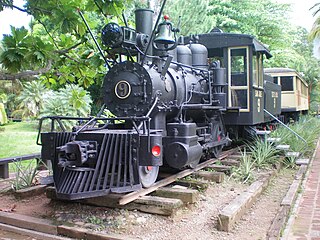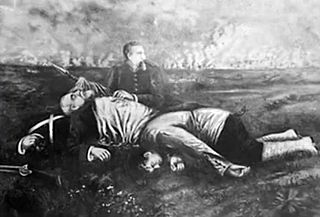The Football War, also known as the Soccer War or the Hundred Hours' War, was a brief military conflict fought between El Salvador and Honduras in 1969. Existing tensions between the two countries coincided with rioting during a 1970 FIFA World Cup qualifier. The war began on 14 July 1969 when the Salvadoran military launched an attack against Honduras. The Organization of American States (OAS) negotiated a cease-fire on the night of 18 July, which took full effect on 20 July. Salvadoran troops were withdrawn in early August. The war, while brief, had major consequences for both countries and was a major factor in starting the Salvadoran Civil War a decade later.

The Federal Republic of Central America, originally known as the United Provinces of Central America, was a sovereign state in Central America which existed from 1823 to 1839. The federal republic was composed of the territories of the former Captaincy General of Guatemala and consisted of the modern countries of Costa Rica, El Salvador, Guatemala, Honduras and Nicaragua, as well as parts of Belize and Mexico.

The Greater Republic of Central America, later the United States of Central America, originally planned to be known as the Republic of Central America, was a short-lived political union between El Salvador, Honduras, and Nicaragua, lasting from 1896 to 1898. It was an attempt to revive the failed Federal Republic of Central America that existed earlier in the century.

Carlos Basilio Ezeta y León was President of El Salvador from 22 June 1890 to 9 June 1894, when he was overthrown in the Revolution of the 44. He was a military ruler. He died on 21 March 1903, aged 50.

Rafael Antonio Gutiérrez was the president of El Salvador from 10 June 1894 to 13 November 1898. He was a leader of the Revolution of the 44 which overthrew President General Carlos Ezeta from April to June 1894. Gutiérrez served as provisional president until being officially inaugurated in March 1895 after his victory in the 1895 presidential election, in which he was the only candidate.

Tomás Herculano de Jesús Regalado Romero was the president of El Salvador from 14 November 1898 until 1 March 1903. He was a military ruler and gained power by deposing Rafael Antonio Gutiérrez, a man he had previously helped achieve control of the country by taking part in a conspiracy to oust Carlos Ezeta four years earlier. Elected to a four-year term in 1899, he promoted the construction of railways, declared an amnesty for political exiles, and began the construction of the Santa Ana Theater.

Fernando Figueroa was the President of El Salvador from 14 May to 18 June 1885 and again from 1 March 1907 to 1 March 1911. He also served twice as Minister of National Defense and Governor of San Vicente.

Doctor Manuel Enrique Araujo was a Salvadoran politician and physician who served as president of El Salvador from 1 March 1911 until his death on 9 February 1913 to his injuries sustained in an assassination attempt five days prior. Araujo is the only Salvadoran president to have been assassinated while in office.
The Revolution of the 44 was a military rebellion led by a group of Salvadoran generals and landowners, known as "the 44", against the government of President General Carlos Ezeta and Vice President General Antonio Ezeta.

Pablo Sánchez de Buitrago Sandoval y Benavente was a legitimist Nicaraguan politician who served as the 2nd Supreme Director of Nicaragua from 4 March 1841 to 1 April 1843. He was the first non-acting, elected Supreme Director.

This is an index of Central America-related articles. This index defines Central America as the seven nations of Belize, Costa Rica, El Salvador, Guatemala, Honduras, Nicaragua, and Panama.

Honduras is a republic in Central America, at times referred to as Spanish Honduras to differentiate it from British Honduras, which became the modern-day state of Belize.

The nations of El Salvador and Mexico established diplomatic relations in 1838. Both nations are members of the Association of Caribbean States, Community of Latin American and Caribbean States, Organization of American States, Organization of Ibero-American States and the United Nations.
The 1923 Central American Treaty of Peace and Amity, officially known as the General Treaty of Peace and Amity, 1923, was a treaty signed by the five nations of Central America in 1923 which established that all nations would denounce and not recognize any government which arose in any of the five signatory nations through illegal means. The treaty remained effective from its signing on 7 February 1923 until it was denounced by the Central American Court of Justice in 1934.

The Totoposte Wars were three military conflicts fought in Central America between 1890 and 1906. The First Totoposte War occurred during the presidency of Manuel Lisandro Barillas Bercián in Guatemala, after the overthrow of Salvadoran President Francisco Menéndez by General Carlos Ezeta in El Salvador, which caused the exile of many Salvadorans who took refuge in Guatemala and who requested the help of President Barillas Bercián to stop the armies of Ezeta. The Second Totoposte War arose after the opposition of Guatemalan President Manuel Estrada Cabrera to the integration of Guatemala with the Greater Republic of Central America since Estrada Cabrera was more inclined to work with the government of the United States. The Third Totoposte War occurred in 1906 in similar conditions. In all three wars, the Guatemalan people mockingly referred to the war as the "Totoposte War" because it only served to consume large amounts of this corn-based food, without actually fighting.

Barrios' War of Reunification, also known as Barrios' great attempt, was a war initiated by Guatemalan President Justo Rufino Barrios in 1885 with the goal of reunifying Central America. Of the five Central American countries, only Honduras supported Barrios' reunification effort; Costa Rica, El Salvador, and Nicaragua opposed it, as did Mexico.

Prudencio Alfaro Menéndez was a Salvadoran politician who served as Vice President of El Salvador from 1895 until 1898. He later led a joint Honduran-Nicaraguan invasion of El Salvador in 1907.
Relations between the Greater Republic of Central America, also known as the United Provinces of Central America, and the United States were formally established in 1896 following El Salvador, Honduras, and Nicaragua agreeing to form a union similar to the former Federal Republic of Central America. Relations lasted until 1898 when the Great Republic dissolved and relations with the United States continued with the individual states of El Salvador, Honduras, and Nicaragua.

From January 1822 to July 1823, the Captaincy General of Guatemala, a former Spanish colony, was controlled by the First Mexican Empire, and briefly, the Supreme Executive Power—the provisional government that succeeded Mexican imperial rule. The captaincy general consisted of the provinces of Chiapas, Costa Rica, El Salvador, Guatemala, Honduras, and Nicaragua—the six southernmost provinces of the Mexican Empire. The incorporation of Central America brought Mexico to the height of its territorial extent.

Luis Alonso Barahona, sometimes spelt Baraona, was a Salvadoran military officer, politician, and diplomat who served as the minister of war and the navy in 1915. He also served as the governor of the Honduran department of Cortés from 1900 to 1902 and as a deputy to the legislature of the Greater Republic of Central America in 1898. Barahona stood as a presidential candidate in El Salvador in both 1907 and 1911, however, he lost both elections to Fernando Figueroa and Manuel Enrique Araujo, respectively.

















